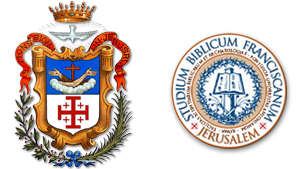...................................
[read in Italian] ![]()
The first 1609-16010 edition was printed in Rome by Typographia Linguarum Externarum (formerly Tipografia Medicea Orientale) and it is a large in-folio, nowadays very rare. Here the Trattato consists of a part of textual descriptions followed by plans and sections of buildings, such as the Holy Sepulchre, the Dormitio Virginis and the Cenacle. Engravings were made by the painter and engraver Antonio Tempesta. Bernardino Amico addresses the reader at the beginning of the section containing the illustrations, encouraging people who wish to visit the holy places: the friar invites them not to think of their family, their material goods and the comforts of their houses, in order to embrace the desire to go on pilgrimage. He also warns them about the dangers they could meet on their way (like storms and pirates): indeed, those risks can be faced with patience looking forward to the future happiness given by reaching the Holy Land.
| [click sulle immagini per ingrandirle / click on images to enlarge] |
This work is dedicated to Philip III of Spain. Bernardino Amico praises him for his religious zeal, comparing him to Godfrey of Bouillon and Baldwin I of Jerusalem, and for his economic support to Franciscans in need in the Holy Land. Moreover, the author asks for the mediation of Francisco Ruiz de Castro, the king’s ambassador to Rome, so that Amico’s treatise would be more favourably received by Philip. There are still doubts about the original dedicatee, due to the presence of erasures in some engravings. For instance, the scroll inserted in the plan of the Church of the Nativity is now empty: that portion of the copperplate was indeed erased. This prevents the original content from being known, even though several hypotheses have been made: it could be a previous dedication, considering that a coat of arms can be glimpsed.
This edition is extremely rare, but please note that there is a complete digitisation of the copies today in the Bibliothèque municipale in Lyon and in the Bibliotheca Hertziana in Rome.
